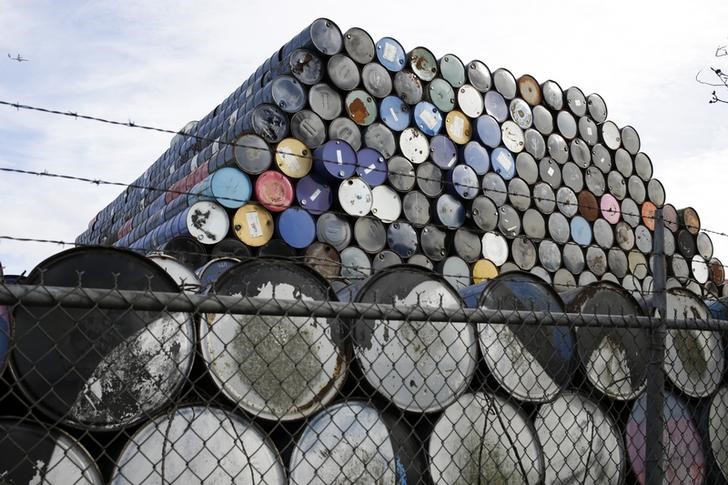Investing.com - Oil prices settled higher in the U.S> on Friday as fresh sanctions on Iran imposed by the U.S. Treasury were seen as a first salvo in a wider split, while an increase in oil drilling in the U.S. held gains in check.
Rising tension between Iran and the U.S. over a ballistic missile test by Tehran this week has led to some sharp words from the White House on Thursday.
In response, the U.S. Treasury Department sanctioned more than two dozen Iranian, Chinese, and Emirati businesses and persons for supporting Iran’s ballistic missile program and named officers and business executives tied to Iran’s elite military unit, the Islamic Revolutionary Guard Corps, for their suspected role in aiding the Lebanese militia, Hezbollah, and Tehran’s defense industries.
U.S. officials said the sanctions, the first issued against Iran in more than a year, didn’t violate the landmark nuclear agreement Tehran reached with the U.S. and other world powers in 2015. President Donald Trump issued a cryptic tweet after the sanctions.
"Iran is playing with fire - they don't appreciate how "kind" President Obama was to them. Not me!"
Meanwhile, oil rigs in the U.s. rose by 17 to 583 at the end of last week, oilfield services firm Baker Hughes said on Friday, reaching the most since the week of Oct. 23, 2015.
The number of gas-only rigs held steady at 145. This brings the total number of active oil and gas rigs to 729, an increase of 17. The total count is now higher by 158 from a year-ago, while the oil-only is in positive territory over the same time period by 144 rigs.
Last week the oil-rig count rose by 15 to 566, while the total rig count increased by 18 to 712.
On the New York Mercantile Exchange, crude oil for delivery in March rose 0.54% to $53.83 a barrel, while on the Intercontinental Exchange in London, Brent oil for March delivery gained 0.44% to 56.81 a barrel. Markets in China reopened on Friday after a week-long break and a private survey released in the day showed a slip dip in manufacturing activity.
The China Caixin manufacturing purchasing managers' index (PMI) for January slowed from December, missing a Reuters poll forecast, but continued to show the mainland's economy was recovering. The reading on Thursday came in at 51.0 in January, down from December's 47-month record of 51.9 and below a Reuters' poll forecast for 51.8. A reading above 50 indicates expansion, while a reading below signals contraction.
On Tuesday, the official manufacturing PMI came in at 51.3 for January, down a smidgen from 51.4 in December, but still better than a Reuters poll forecast of 51.2. The official figures tend to focus on larger companies, while the private China Caixin PMI focuses on smaller and medium-sized firms.
On Thursday, Russia's energy ministry said January output fell by 100,000 bpd, less than hoped for but in the right direction, and Iraq has also moved to trim output at least in spirit. Russian Energy Minister Alexander Novak however said that overall OPEC and non-OPEC nations have trimmed 1.4 million barrels-per-day (bpd) of crude supplies to the market in January under a coordinated effort to cut nearly 1.8 million bpd on verages in the first half of 2017.
As well, the gains came even after crude oil inventories in the U.S. showed a higher than expected 6.5 million barrels build at the end of last week, the Energy Information Administration (EIA) said on Thursday, well above the 2.6 million barrels build seen while stocks at the Cushing, Oklahoma, hub rose by 530,000 barrels.
Gasoline stocks rose by 3.87 million barrels and distillate supplies rose by 1.57 million barrels.
The American Petroleum Institute (API) said late Tuesday that crude inventories jumped 5.8 million barrels at the end of last week, while distillate stocks rose 2.3 million barrels and gasoline supplies by 2.9 million barrels and stocks at Cushing fell by 900,000 barrels.
Natural gas for March delivery on the New York Mercantile Exchange dfell 3.98% to $3.060 per million British thermal units.
